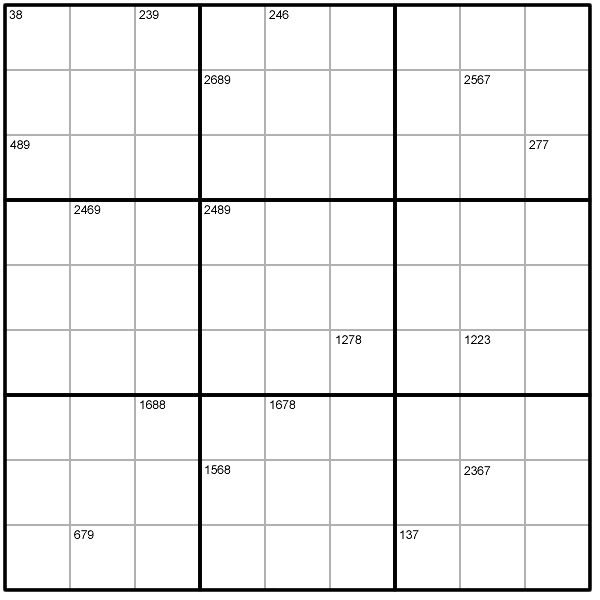Intersection Sudoku 1
A Sudoku with a twist.
Problem
Produced by Henry Kwok
Image

The Basic Rules of "Intersection Sudoku"
Like the conventional Sudoku, this Sudoku variant consists of a grid of nine rows and nine columns subdivided into nine 3x3 subgrids. Like the Sudoku Classic, it has two basic rules:
- Each column, each row, and each box (3x3 subgrid) must have the numbers 1 to 9.
- No column, row or box can have two squares with the same number.
The puzzle can be solved with the help of small digits in the top parts of certain squares. The small digits stand for the numbers in the squares horizontally and vertically adjacent to the square that contains the set of small digits. The number of small digits in each set can range from a minimum of 2 (in a corner of the puzzle) to a maximum of 4 (in any square beyond the edge of the puzzle).
A Short Demonstration
The first square in the top left corner of this sample (1,1) contains a set of two small digits {3 and 8} and the square (1,3) contains a set of three small digits {2, 3 and 9}.
Image

If we colour the squares adjacent to (1,1) with blue, and the squares adjacent to (1,3) with yellow, we find that the square (1,2) is coloured both with blue and yellow. It is the intersection of two sets of coloured squares, hence the name "Intersection Sudoku".
As both squares (1,1) and (1,3) contain the small digit 3 , the number in square (1,2) must be 3. This leaves the square (2,1) with the number 8.
Getting Started
- A clue like 2567 in cell (8,2) confirms the positions of four of the numbers in the surrounding 3x3 square.
- It is useful to remember that the same number cannot appear in the same row or in the same 3x3 square. This can help with a clue such as1223 in cell (8,6) because it tells you the position of one of the twos.
Student Solutions
Image

